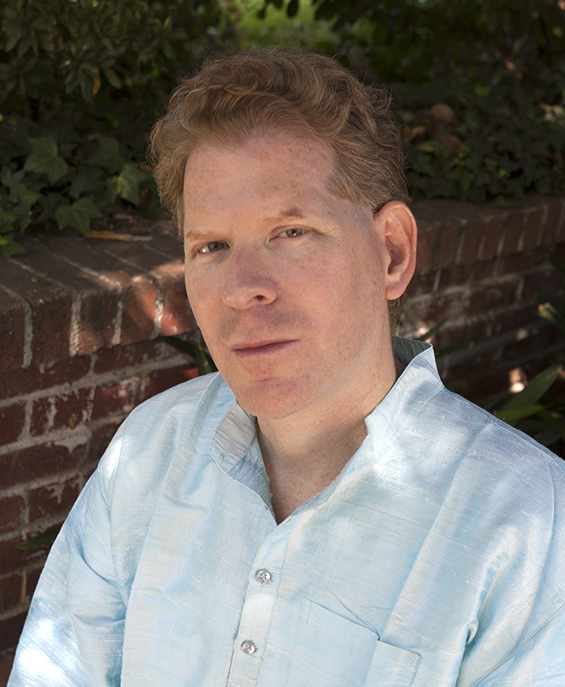MICHAEL ROBINSON - TEXTURA SPOTLIGHT NO. 13

Who: My full name is Michael Eric Robinson. My paternal grandparents changed the family name from Rabinovitz after arriving from Russia. Born in Manhattan, and raised nearby in Crown Heights, North Merrick, and Wantagh, I received a BM in Composition from the Crane School of Music and also studied at Stony Brook, CalArts, and Tanglewood. Following college, I lived in Long Island City, Manhattan, Kapalua, and Beverly Hills, and currently live in Los Angeles. What: Musical terms for what's going on today outside of traditional genres are mostly suspect, and calling the music one does by your own actual name is probably best! I've never heard music that's remotely similar to what I do. WNYC FM and The Village Voice did compare some early compositions to Conlon Nancarrow, whose music was unknown to me at the time. My music is performed in real time by a computer, which I program from a finished musical score, without any human interaction during performance. Spatialization is treated in a manner that renders it different for every performance. Sounds are mostly samples of acoustic instruments, along with synthesized tone colors. Even this technical description is lacking. For example, one listener told me that after her husband died, listening to Nagamani was the only thing that gave her comfort for weeks, and a healer in Los Angeles told me that listening to Snow Leopard Meadow was part of the protocol for a client who had a remarkable recovery. Frequently, I hear from people who think my music is played by live musicians, even though that is not my intention. Currently: My music is represented by recordings and scores, and I also enjoy writing about music. Lucknow Shimmer and Lahaina Lanterns are my most recent releases. Lucknow Shimmer was inspired by Machaut, Hindustani music, and Michael Jackson. Several tabla rhythms learned from Swapan Chaudhuri are elaborated upon by intermingling melodic and rhythmic voices. Lahaina Lanterns includes my first use of a harmonic progression in years, presenting an elegiac rasa. We are in the middle of a severe drought here, and I decided to perform Mian ki Malhar in my studio, a composition based upon a raga that is a prayer for rain. This musical “adventure” was documented in my most recent writing titled Music for Rain. Currently, I am working on a new composition, and that is where much of my attention goes. Having my CDs and scores more available is paramount. Implementing installations involving my music for museums and other public spaces is another priority. My music may be perfect for someone in film searching for a different sound, but that is not something I actively pursue. Musical philosophy: I agree with Charlie Parker that music is what you live: “Music is your own experience, your own thoughts, your wisdom. If you don't live it, it won't come out of your horn.” I endeavor to instill physical, intellectual, and spiritual energies into my music, focusing on developing the unique rasa or “personality” of each composition, and, hopefully, it will take on a life of its own. Helen Vendler summed up creative invention best: “Form is content as deployed. Content is form as imagined.” Influential figures, works, and events: When I met Leonard Altman, a prominent musicologist, educator, and arts administrator, he told me I was “a very unusual person” and arranged for me to study at Tanglewood. Leonard gave me his business card, with the title of Music Program Director of the New York State Council on the Arts, and wrote his home phone number on the back, stating that I should feel free to call him at any time of day or night. It was clear I was undergoing a difficult transitional period, and he rightly felt some guidance would be beneficial. Altman enthusiastically and decisively encouraged me to make composition my life's work at this critical crossroad, and asked Steve Reich to serve as a mentor. My personal choice was Karlheinz Stockhausen, but Leonard said he was the one composer who was out of his or anyone else's reach! Altman had a special interest in living composers, including corresponding with Shostakovich and Prokofiev after meeting them in Russia, the latter gifting him with an autograph score. Reich offered some practical and important suggestions, including convincing me, inadvertently, to move to NYC, which was absolutely life-transforming. Pandit Jasraj, Shivkumar Sharma, and Zakir Hussain are three of the Indian classical musicians who have exerted an enormous influence on my musical development. It was revelatory to interview them individually, each time treating the interactions as music lessons where I prepared questions pertinent to technical, aesthetic, and spiritual issues that both fascinated and mystified me. Web site: AZURE MILES RECORDS March 2014
|